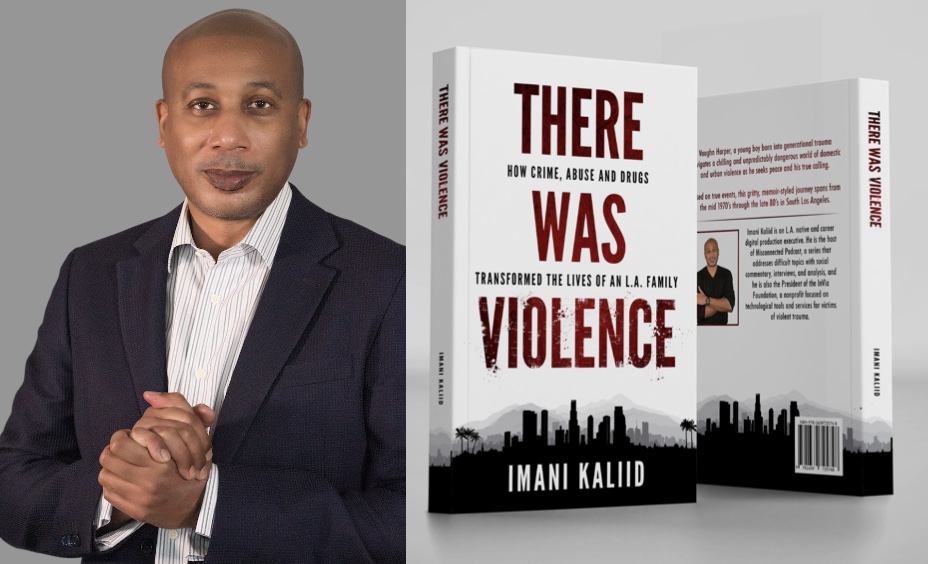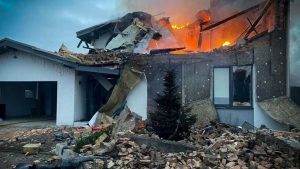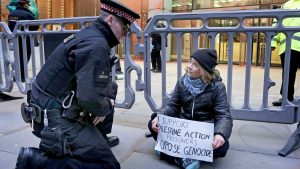Growing up as an inner-city kid in Los Angeles, I’m no stranger to domestic and street violence.
I’ve been up close and personal with physical altercations with family, had bullets whizzing overhead, and witnessed armed assaults—you name it. After college, I later entered the world of corporate America, moved to a safer neighborhood, and experienced international travel, hoping that I’d mostly be sheltered from the violence from which I was raised.
Sure, my life looked different than my previous years, but periodically, I’d witness the occasional fight break out in a bar or at a sporting event. Unfortunately, sometimes violence may find its way to you. Fortunately, I can credit my long streak of staying safe and uninjured by violence with applying simple safety principles that I learned as a younger man,” says Imani Kaliid, author of “ There Was Violence,” President of the InVia Foundation and host of the “Misconnected Podcast.”

I sat down with Imani Kaliid for his invaluable insights on staying safe and avoiding a violent crisis :
1. Be Aware of Your Surroundings
Give your surroundings a good once-over upon your arrival (home included). Violence won’t announce its presence nor the timing in which it will strike. You want to have key details at the forefront of your mind so that you can respond to threats as quickly as possible, versus clumsily planning during a threatening crisis.
Check the social temperature (people’s temperament) and where exits are located. Make it a point to see who the attendees are, what businesses are nearby, and what can be used to distract an attacker or defend yourself (i.e., the chair you’re sitting in or a hot beverage).
2. Create Your Exit Plan
When it’s clear that the potential threat of danger is growing, refer back to the mental notes you made when observing your surroundings. Maybe you can quietly leave this venue. Perhaps you’re isolated and need to factor in how far you need to run for safety, or if you are athletic enough to scale a fence.
3. De-Escalate, But Prepare For Flight or Fight
At the end of the day, we all want to go home rather than ending up in the hospital or worse. When faced with the threat of a brawl, people sometimes take a stance of passiveness as to not escalate a situation further. I’ve been in bars where much smaller men have shown hostility towards bigger men, but the bigger guys have often spoken with softer tones and backed down, not because they were afraid, but simply because it’s not worth it. However, this doesn’t mean you can’t quietly prepare. Mentally ready yourself for a physical confrontation or leave if you can (recommended). Some aggressors are looking for that push back so they can get into the confrontation they want.
You can raise your hands at shoulder level (defensive posture), verbally pacify them (i.e., “You’re right. You got it man.” or for women, “I’m sorry. My mistake.”) Less is more. Maybe this person is drunk, has emotional issues, or needs to get verbal aggression out of their system.
4. Follow Your Gut (Intuition)
Our brains are supercomputers that know more than we do on a subconscious level. If something doesn’t feel right, it probably isn’t. If your intuition tells you that a person, venue, time or a combination of all three feels unsafe, trust yourself enough to believe that you have good reason to remove yourself or simply stay home.
5. Create a Safety Pod
Choose three to five of your most reliable friends and create a group thread on your smart phone’s messaging app. Learn how to use the single-click function where you can drop your location.
If you ever get into a pinch where there is an active shooter, robbery or some brawl ramping up, you may not have time or composure to search through your contact list and compose messages and…
a) Share your location.
b) Describe the dangerous details in progress (i.e. active shooter, robbery, sexual aggressor).
Agree on single- or two-word messages that translate to Send the police! (i.e. Blue Marlin) or Active shooter here! (Trader Joe’s).
The InVia Foundation is a 501(c)(3) nonprofit entity based in California that is focused on technological tools and services for victims of violent trauma. “There Was Violence” serves as a relatable testimony and unfortunately common experience for multitudes of victims who remain silent, struggling or healing, which is why Kaliid sought a more direct avenue to connect and contribute to the world by establishing the InVia Foundation to save victims in need. Learn more about this foundation and how it can help victims of violence here www.therewasviolence.com.





